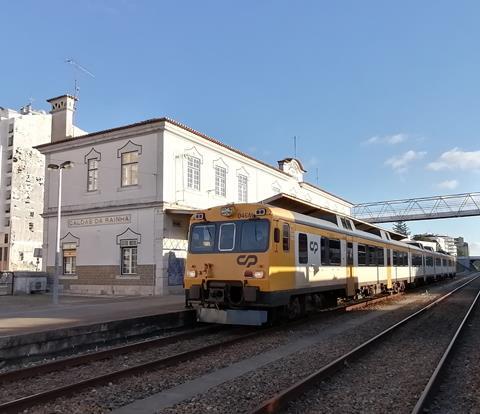
PORTUGAL: Work is set to start on rebuilding and electrifying the central section of the Linha do Oeste corridor between Torres Vedras and Caldas da Rainha following signature of a contract between Infraestruturas de Portugal and the construction consortium on June 28.
The Linha do Oeste runs along the country’s west coast between Lisboa, Leiria and Figueira da Foz, and the route modernisation is being delivered in two tranches. Work is already underway on the first phase, which covers the electrification and renewal of the 85 route-km from Mira Sintra-Meleças to Torres Vedras within a budget of €61·5m. Signalling is to be enhanced, telecoms systems replaced and 15 level crossings eliminated.
Completion of the first phase is due by the end of 2023, and is expected to cut the fastest journey time between Lisboa and Caldas da Rainha from 44 min to 29 min. Electrification will enable local services to be increased from 16 trains each way per day to 48, although the maximum running speed will remain at 110 km/h.

The second package covering the 44 km between Caldas da Rainha and Torres Vedras has been awarded to a consortium of Ramalho Rosa Cobetar, FCC and Convensa, with a budget of €38·4m. This package forms part of the Ferrovia 2020 national investment programme, and will be co-financed from EU sources.
As well as wiring the route and removing various level crossings, IP intends to refurbish or renew nine stations or halts along the corridor. However, the largest single intervention will be construction of a 2 km cut-off at Outeiro da Cabeça near Torres Vedras. The work is due to be completed in just under two years.
Trains will be able to run at 120 km/h to 140 km/h between Caldas da Rainha and Torres Vedras, but IP envisages that the northern section of the route towards Leiria will be upgraded for 160 km/h. Leiria is expected to become an interchange with the proposed Porto – Lisboa high speed line.
The Linha do Oeste has recently been added to the EU’s TEN-T network at the behest of the Portuguese government. The coastal line has been included because of its role as an alternative to the busy north-south main line between the capital and Porto. It also provides access to the Monte Real air base, one of the main NATO facilities in Portugal.

















